16 Types of Koi Fish: Varieties, Colors, & Classifications (With Pictures)
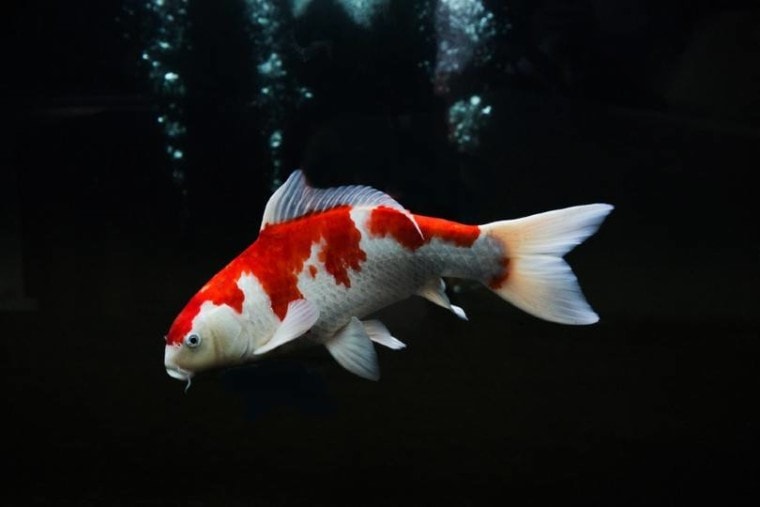
The koi is a stunning-looking fish, thanks to its beautiful color schemes and patterns. No wonder it’s such a popular pet.
Koi fish are also known as Nishikigoi, which is Japanese for brocaded carp, as they are a species of the carp family. Their scientific name is Cyprinus rubrofuscus. While it is the Japanese who started breeding these fish for their beauty in the mid-1800s, it is believed that koi fish originally come from China.
In addition to their beauty, their intelligence is another reason behind their immense popularity. You can train them to eat from your hand, or even mouth! What’s more, koi fish make lifelong companions, as they typically live for up to 50 years!
There are numerous varieties of koi fish, making choosing an incredibly difficult task. This article will discuss 16 of the most popular types of koi fish to help you make an informed decision.
The 16 Types of Koi Fish
1. Kohaku Koi
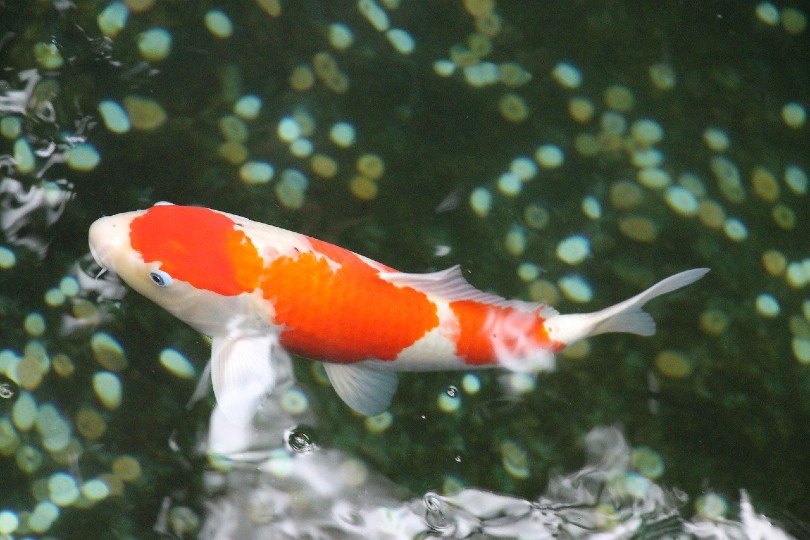
The Kohaku is arguably the most famous type of koi, as it is one of the original kois. This breed was established in the 1890s.
The fish comes with a white body bearing red patches. The intensity of these patches varies between dark red and light orange-red. You can use these markings to distinguish between different types of Kohaku.
2. Sanke Koi
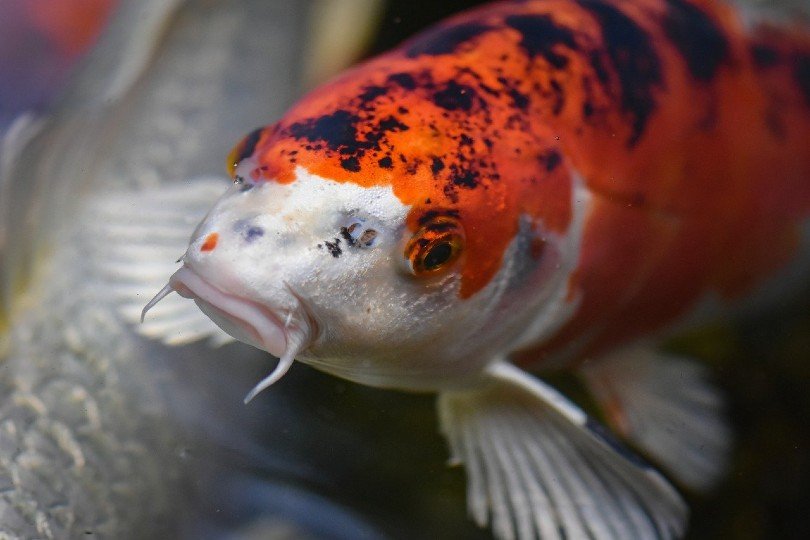
Also known as the Taisho Sanke or the Taisho Sanshoku, the Sanke comes in white and bears red and black markings. You could think of the Sanke as a Kohaku peppered with black spots. However, these black markings do not appear on their heads or below their lateral lines.
The Sanke was first introduced to the public in 1914 during the Taisho era.
3. Showa Koi
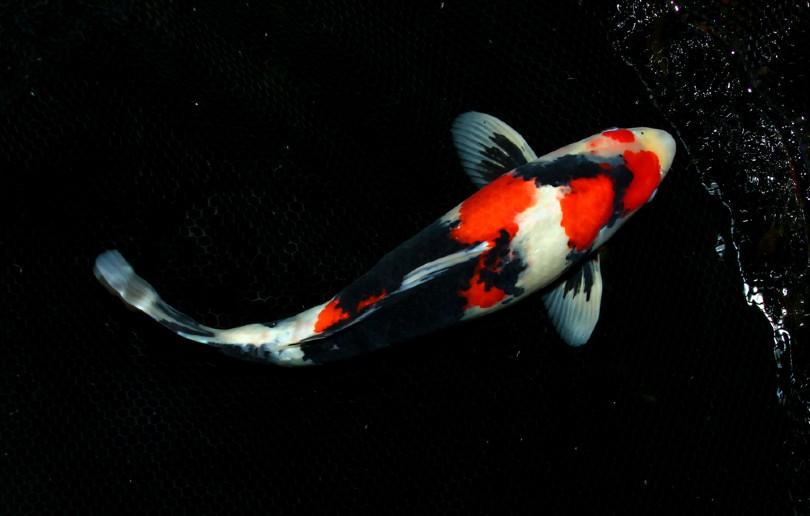
Also known as the Showa Sanshoku or Showa Sanke, this variety of koi comes in a black body with red and white spots. The Showa made its first appearance in 1927 during the Showa era in Japan. Early Showa kois featured a lot of black, and it is only in recent times that they have been bred to have more white on them.
It can be difficult to tell modern Showa kois and Sanke kois apart. However, while the Sanke does not have black spots on its head and below the lateral line, the Showa does.
4. Utsuri Koi

Formally known as Utsurimono, this koi fish’s name means ‘reflective ones,’ or ‘reflections.’ The Utsuri features three subtypes, all having black as their primary color. The variants have either red, white, or yellow spots.
Utsuri kois made their first appearance in 1925.
5. Bekko Koi
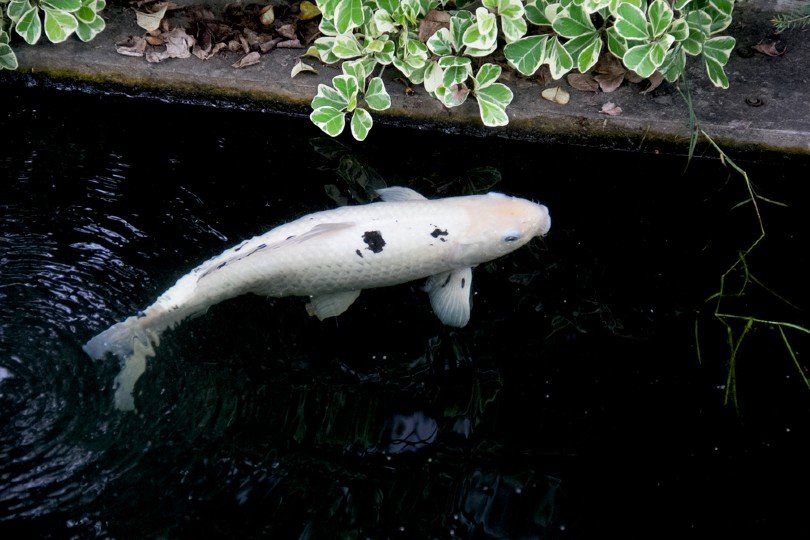
The name Bekko means ‘tortoiseshell’. Bekko kois are basically Utsuri kois, but in reverse; they come with a colored base with black patterns. As a result, most people find it difficult to distinguish between the Bekko and the Utsuri. Enthusiasts, however, know that the Bekko always has a clean head while the Utsuri has black marks on its head.
6. Asagi Koi
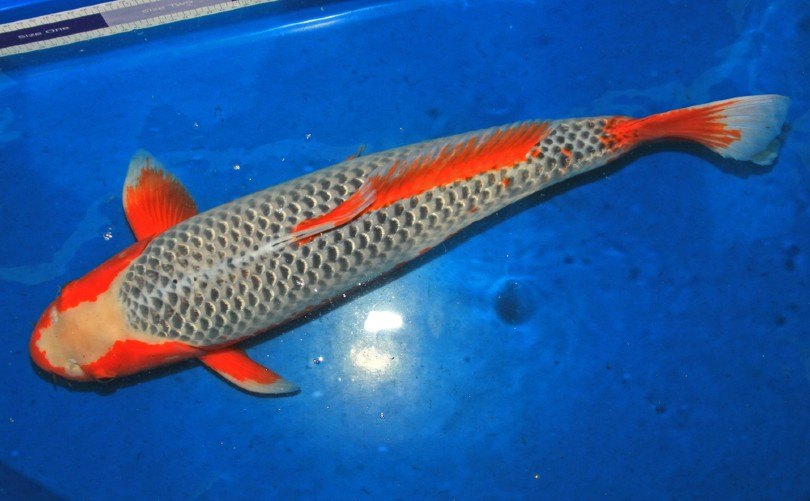
The Asagi koi is blue-grey fish with dark blue lines running along the edges of its scales to form a spectacular net-like pattern. Additionally, it has a red hue below its lateral lines and sometimes on its fins and belly.
The Asagi is one of the original kois, tracing its origins to as far back as 1850. In fact, most modern kois are variants of the Asagi.
7. Shusui
The Shusui was one of the first kois to be bred from the Asagi. It came about from the crossbreeding of an Asagi with a mirror carp. Shusui means ‘autumn green,’ as an homage to its coloration.
8. Koromo Koi
Koromo is a name that means ‘robed.’ This koi fish features a white body with red markings. Koromo kois are the result of breeding the Asagi with a Kohaku in the 1950s. As a result, Koromo kois also spot the distinct net-like coloration at the edges of its scales.
The Koromo has three primary subtypes: the Aigoromo that has blue edges, the Sumigoromo that has black edges, and the Budogoromo that has a combination of red and blue on the edges of its scales.
9. Goshiki
Meaning ‘five colors,’ the Goshiki kois are a crossbreed of the Asagi and the Sanke. They feature the white, red, and black colors of the Sanke plus the blue and gray of the Asagi, hence the five colors.
True to its Asagi heritage, the Goshiki also sports a distinct coloration at the edges of its scales.
10. Hikari Muji

Muji translates to ‘single color,’ while Hikari means ‘metallic’ or ‘shiny.’ As you can tell from its name, this koi fish comes in a single color with a metallic or shiny finish. There are various subtypes of the Hikari Muji koi, including:
- Aka (red) Matsuba
- Orenji (deep orange) Ogon
- Gin (Silver) Matsuba
- Kin (yellow/gold metallic) Matsuba
- Yamabuki (yellow metallic) Ogon
11. Hikari Utsuri
These are the metallic/shiny variants of the Utsuri koi. They can be gold or silver, depending on the color of the sheen.
12. Kinginrin
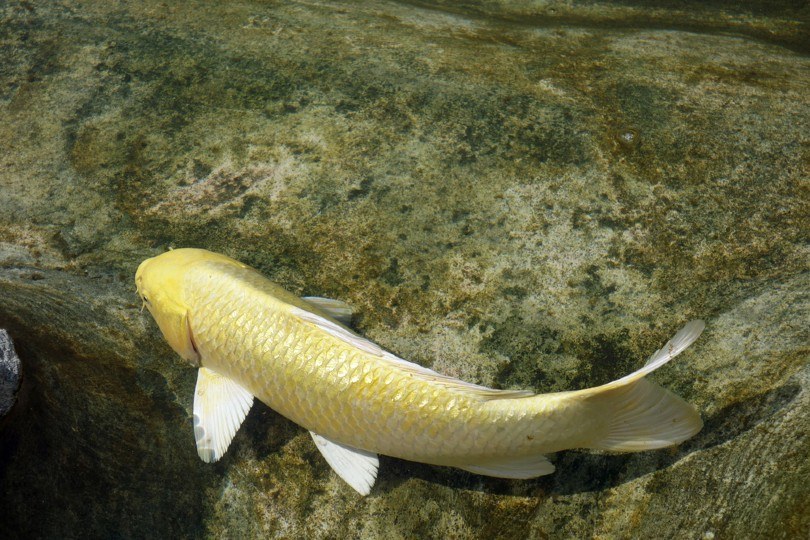
The word Kinginrin translates to ‘gold and silver scales.’ This koi fish features scales with a sparkle effect that resembles finely cracked glass. As such, you can always identify a Kinginrin koi by its gold and silver sparkles. However, since any koi type can be bred to have such sparkled scales, there can be Kinginrin specimens in any koi breed.
Related Read: 9 Best Places to Buy Koi Online in 2021
13. Tancho

The Tancho gets its name from the Tancho crane, Japan’s national bird. The Tancho crane got its prestigious title from the single red spot on its head, which resembles the Japanese flag. The Tancho koi also features a red spot on its head.
Tancho kois come as a result of chance, as the red spot on the forehead is not a trait that you can breed. For a koi to be considered a true Tancho, the red spot must appear between its eyes and should not reach its nose or shoulders. Moreover, there should be no other red coloration on its body.
14. Ginrin
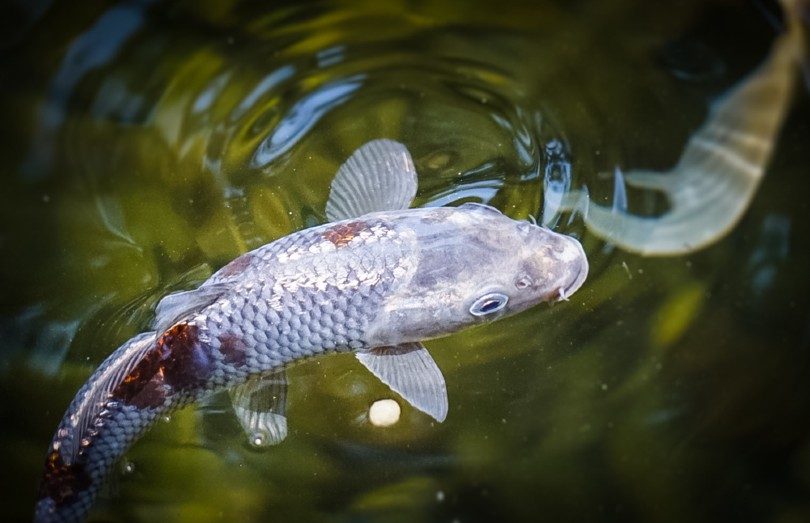
Ginrin is the name given to kois that have diamond scales covering their entire bodies. Their scales can be shiny metallic or platinum, resulting in a spectacular sight.
Ginrin kois trace their roots back to the early 1900s. There are four main types of this koi fish:
- Beta Gin – their entire bodies shine
- Kado Gin – only the edges of the scale shine
- Diamond Ginrin
- Pearl Ginrin
For a koi to be considered Ginrin, it must have sparkling scales throughout its body.
You might also be interested in: Reasons Why Koi Fish Jump Out of Water & How to Stop It
15. Hirenaga
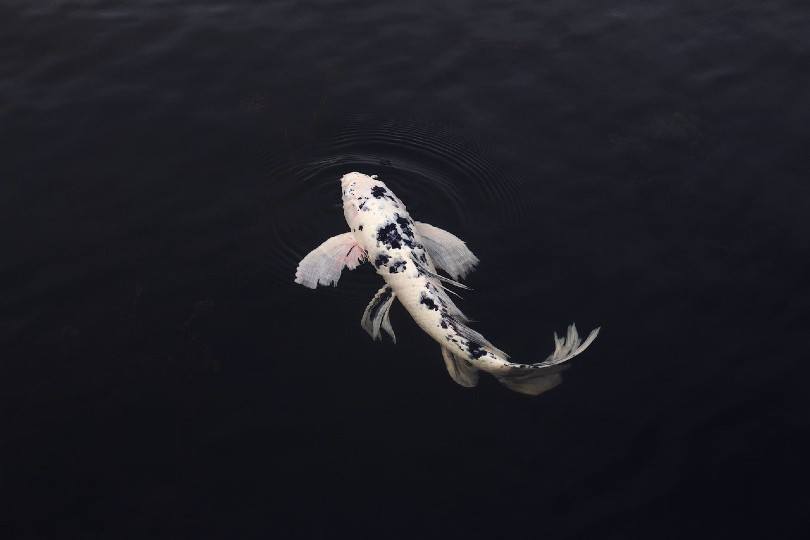
Also known as the ‘butterflies of the water,’ thanks to their long, graceful fins and tails, the Hirenaga are some of the most popular koi fish. For a koi to be a true Hirenaga, its long fin and tails must be without any tears.
16. Kikokuryu
The Kikokuryu comes with a deep black color and a shiny platinum skin, making it one of the most spectacular-looking kois out there. What’s more, it changes colors throughout the year, alternating its black with blue while maintaining the glossy silver finish. Some of the factors that cause it to change colors include temperature and lighting.

There’s Much More
If you have read this far, you now know the main types of koi fish out there. However, you are likely to find as many varieties as there are breeders. This is why we cannot possibly exhaust all the different types you will meet. Nonetheless, the types we have listed are recognized internationally across all breeders.
Related Read: Do Koi Eat Other Fish?
Featured Image: Gatot Adri, Shutterstock



Không có nhận xét nào